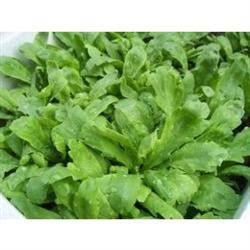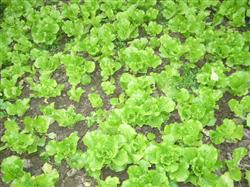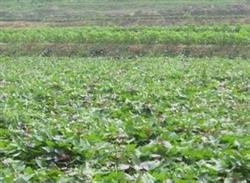Cultivation techniques of Artemisia annua in greenhouse in early spring

It is better to select varieties with strong cold resistance, and it is generally necessary to use 1.5-2kg per mu. Three to five days before sowing, the seeds were soaked in warm water of 30 ℃ for 24 hours. After washing and drying, they were placed under the condition of 15: 20 ℃ to accelerate germination. The seeds were washed with warm water once a day, and the seeds could be sown after germination. Fertilization and soil preparation combined with the application of diammonium phosphate 20kg / mu, potassium sulfate 10kg / mu, ammonium bicarbonate 25kg, deep turning and leveling to form a flat border with a width of 1.5m. There are two reasonable sowing methods: ① sowing watering in the border, sowing seeds evenly after water infiltration, covering soil 0.5cm thick. ② strips were planted in the border and ditched at a row spacing of 15 cm to 20 cm, with a depth of 0.5 cm. After watering in the ditch, the strips were sown with seeds, and then covered with soil. Strengthen management and keep the temperature at about 20: 25 ℃ during the day and 10 ℃ at night after sowing. The suitable time for seedling emergence is 15: 20 ℃ in daytime and 8: 10 ℃ at night. When the seedlings grow to 1 × 2 leaves, the seedlings should be kept between 4 × 4 cm, and the seedlings should be thinned and over-dense properly. Start watering when the seedling height is 3 centimeters, and fertilize with water when the seedling height is about 10 centimeters, and use ammonium sulfate 10 to 15 kilograms per mu. Combined with watering and topdressing for 1 and 2 times, 600 times of cytokinin was sprayed reasonably to improve the yield and quality. For pest control, such as leaf blight and downy mildew, spray control such as 72.2% Pulek or 72% or 800 times Kelu can be selected.
- Prev

Cultivation techniques of lettuce in winter
Varieties were selected to cultivate mid-and late-mature heading lettuce with strong cold resistance. The cultivation date can be planted in solar greenhouse from mid-late November to late January and harvested from the first and middle of January to early March. Fertile sandy loam was selected for seedling breeding, which was fined and made into flat beds. Then apply sifted high-quality manure every 10 square meters.
- Next

Sweet potato clever topdressing rapid expansion
Sweet potato is a potassium-loving crop. In its fertilizer requirements, nitrogen accounts for 30%, phosphorus accounts for 10%, and potassium accounts for 60%. In the growth process, potassium deficiency in early sweet potato will appear internodes, petioles become shorter, leaves become smaller; potassium deficiency in late old leaves vein serious lack of green, and gradually fall off, seriously affecting the formation of late yield. The method of applying potassium fertilizer is: ...
Related
- Where is it suitable to grow horseradish in China? it is expected to see the middle altitude horseradish in Alishan.
- How to prevent tomato virus disease reasonably? (Control methods included)
- Many people like to plant towel gourd on the balcony. What are the main points of this method and management?
- What crops can chili peppers be mixed with?
- Fertilization techniques and matters needing attention in Tomato
- What are the grafting techniques for peach seedlings in spring?
- Harm and control methods of root swelling disease of Chinese cabbage
- What are the pests of sweet potatoes? How to prevent and cure it?
- Symptoms, causes and Control methods of navel Rot in Tomato
- The cause of "Cucumber rotten bibcock" in Farmers' planting Cucumber and its Control Plan

